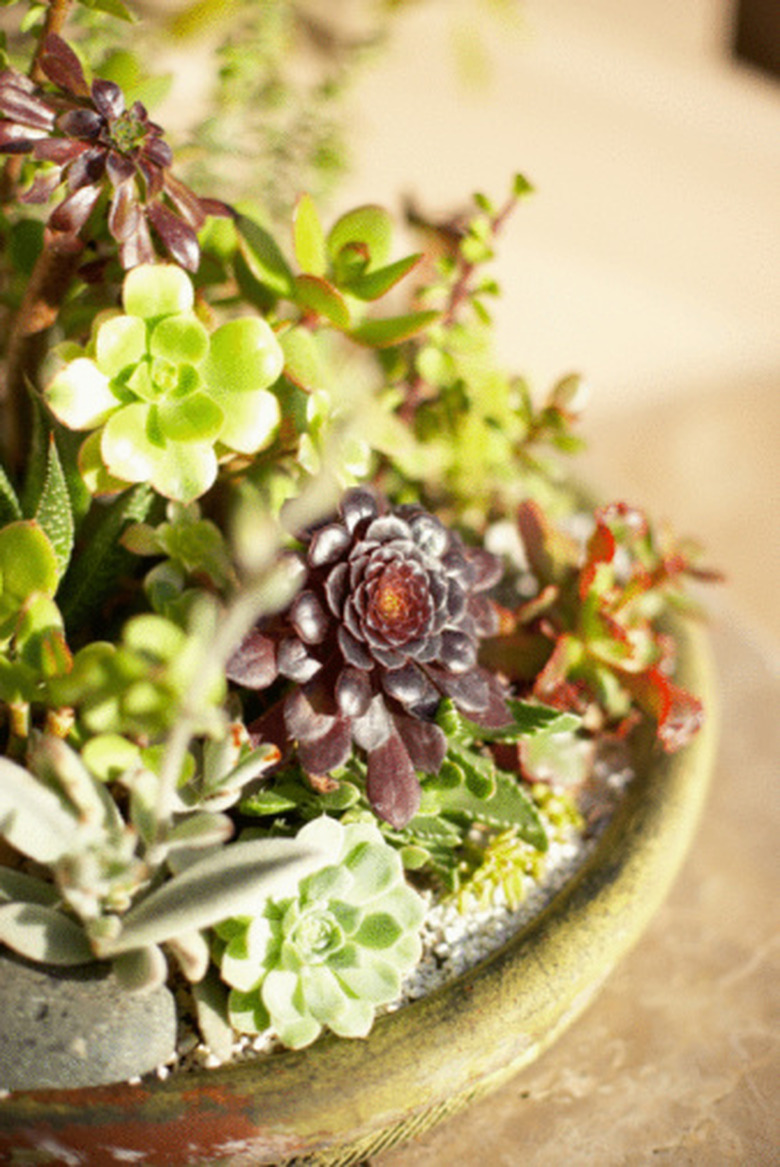How To Plant Succulents In Shallow Dishes
Things Needed
- Gravel
- Charcoal
- Soil
- Peat moss
- Sand
Succulent plants store water in their fleshy leaves, which enables them to survive in dry conditions. Some varieties produce flowers, but most succulents are prized for their attractive leaf formations and colors. A dish garden allows you to grow a sampling of succulent types in a low-maintenance environment. Nearly any shallow dish works well, including bowls and clay planter drip trays. The dish doesn't contain drainage holes so planting preparation is necessary to ensure the succulents thrive in the dish.
Step 1
Place a 1-inch layer of gravel in the bottom of the dish. Sprinkle coarsely ground charcoal on top of the gravel. The gravel provides drainage and the charcoal prevents the soil from developing a foul odor.
- Succulent plants store water in their fleshy leaves, which enables them to survive in dry conditions.
- A dish garden allows you to grow a sampling of succulent types in a low-maintenance environment.
Step 2
Combine equal parts potting soil, coarse sand and peat moss. Place the soil mixture on top of the gravel and charcoal layer in the dish, filling the dish about half-full with the soil mixture.
Step 3
Create a mound of soil for each plant. Set the succulent on top of the mound, spreading the roots around the mound. Most plants tolerate close spacing of two to three inches in the confines of a dish garden.
Step 4
Fill the dish with soil until the plant roots are completely covered and the crowns sit right at or slightly above the soil surface. The crown is the area where the stem or foliage emerges from the top of the root system.
- Combine equal parts potting soil, coarse sand and peat moss.
- Fill the dish with soil until the plant roots are completely covered and the crowns sit right at or slightly above the soil surface.
Step 5
Water the soil in the dish garden until it feels moist but not soggy. Mist the foliage of the succulents so any soil on the leaves is rinsed away.
Step 6
Place the dish garden in a location that receives bright, indirect sunlight. Water only when the soil feels almost completely dry.
Tip
Sedum, echeveria and aloes are just a few succulent types that thrive in dish gardens. Succulents rarely require fertilizer, so the only maintenance usually necessary in your dish garden is occasional watering.
